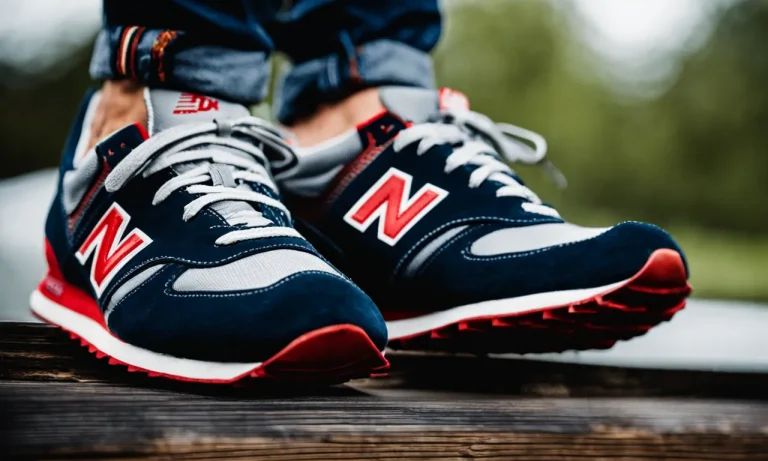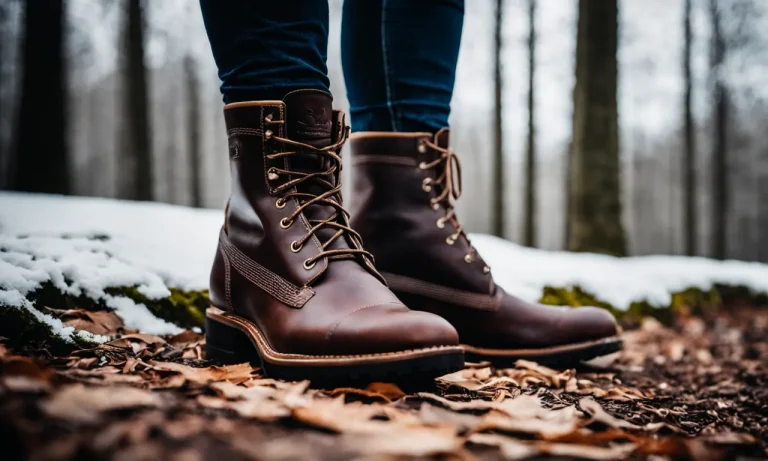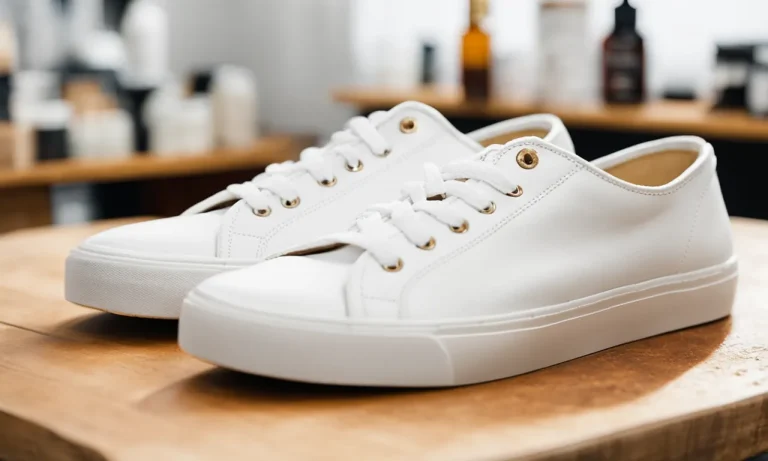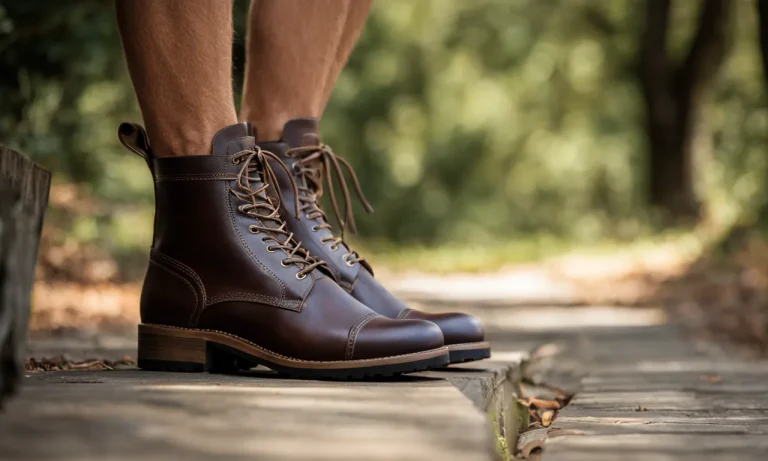For outdoor enthusiasts, choosing the right footwear is crucial. Hiking boots and combat boots are two popular options, but which is better suited for your needs? In this comprehensive guide, we’ll examine the key differences between hiking and combat boots, the pros and cons of each, and provide tips to help you decide which is the best choice for your adventures.
If you’re short on time, here’s a quick answer: Hiking boots are optimized for traversing trails and uneven terrain, while combat boots are extremely durable boots designed for military use. For most hikers and outdoor adventurers, hiking boots will provide better traction, support, and comfort.
But combat boots can be a good option for tactical and high-impact activities.
What Are The Main Differences Between Hiking Boots and Combat Boots?
When it comes to choosing the right boots for your outdoor adventures, it’s important to consider the specific needs of your activity. Hiking boots and combat boots are designed for different purposes and offer distinct features that cater to their intended use.
Here are the main differences between hiking boots and combat boots:
Intended Use and Design
Hiking boots are specifically designed for outdoor activities such as hiking, trekking, and mountaineering. They are built to provide comfort and support during long walks on rough terrains. On the other hand, combat boots are primarily designed for military purposes and are meant to withstand intense physical activities in challenging environments.
Weight
When it comes to weight, hiking boots tend to be lighter compared to combat boots. This is because hikers need footwear that allows them to move swiftly and comfortably over long distances. Combat boots, on the other hand, are often heavier due to the added protection and durability required for military use.
Traction and Grip
Hiking boots are designed to provide excellent traction and grip on various surfaces, including slippery and uneven terrains. They often feature deep lugs on the outsole to enhance stability and prevent slips.
Combat boots also offer good traction, but their design may prioritize other factors such as durability and protection.
Support and Stability
Hiking boots are known for their excellent ankle support and stability. They are built with stiff midsoles and reinforced ankle collars to prevent injuries and provide stability on rugged trails. Combat boots are also designed with support in mind, but their focus may be more on providing stability during intense physical activities and combat situations.
Comfort Features
Hiking boots are typically equipped with features that prioritize comfort, such as cushioned insoles, padded collars, and breathable materials. These features help prevent blisters and provide a comfortable fit during long hikes.
Combat boots, on the other hand, may prioritize other factors such as protection and durability, but they still offer a certain level of comfort.
Durability and Protection
Combat boots are built to withstand harsh conditions and provide maximum protection to the wearer. They are often made from high-quality materials that offer durability and resistance to wear and tear.
Hiking boots, while also durable, may not be as rugged as combat boots and are usually designed to withstand the demands of outdoor activities rather than combat situations.
Water Resistance
Both hiking boots and combat boots often come with water-resistant features to keep your feet dry in wet conditions. However, hiking boots may prioritize breathability to allow moisture to escape, while combat boots may focus more on keeping water out in extreme conditions.
Breathability
Hiking boots are designed to provide breathability to keep your feet cool and prevent sweat build-up. This is especially important during long hikes or in hot weather conditions. Combat boots, on the other hand, may prioritize other factors such as protection and durability over breathability.
Price
The price range for hiking boots and combat boots can vary depending on the brand, materials used, and specific features offered. Generally, combat boots tend to be more expensive due to their specialized design and durability requirements for military use.
Hiking boots, while also available in a wide price range, may offer more affordable options for recreational outdoor enthusiasts.
Key Characteristics and Benefits of Hiking Boots
Built for the Trail
Hiking boots are specifically designed to withstand the rigors of the trail. They are made with durable materials such as leather or synthetic fabrics that can handle rocks, branches, and other obstacles you may encounter in the great outdoors.
These boots are built to last, ensuring that you can rely on them for multiple hikes.
Provide Ankle Support and Stability
One of the most important features of hiking boots is their ability to provide ankle support and stability. The high-cut design of hiking boots helps to prevent ankle sprains and twists, especially when navigating uneven terrain.
With proper ankle support, you can confidently tackle challenging trails without worrying about injuring yourself.
Have Aggressive Lugged Soles
Hiking boots are equipped with aggressive lugged soles that provide excellent traction on various surfaces. These deep treads grip the ground, whether it’s muddy, rocky, or slippery, allowing you to maintain your balance and stability.
This feature is crucial, especially when hiking on steep inclines or traversing through challenging terrains.
Often Waterproof or Water-Resistant
Many hiking boots come with waterproof or water-resistant features. This means that they are designed to keep your feet dry even in wet conditions. Whether you encounter rain, puddles, or streams along your hiking journey, these boots will help to keep your feet comfortable and protected from moisture.
It’s important to note that while hiking boots are water-resistant, they may not be completely waterproof, so it’s essential to choose the right pair based on your specific needs.
Focus on Comfort for Long Treks
Hiking boots are designed with comfort in mind, especially for long treks. They often feature cushioned insoles and midsoles that provide ample support and shock absorption, reducing the strain on your feet and joints.
Additionally, hiking boots usually have a roomier toe box, allowing your toes to move freely and helping to prevent blisters and discomfort during extended hikes.
When to Choose Hiking Boots
Hiking boots are a fantastic choice for various outdoor activities. They provide the necessary support, traction, and protection for your feet, ensuring you have a comfortable and enjoyable hiking experience. Here are some situations where choosing hiking boots over combat boots is the best decision:
Day Hiking on Trails
If you are planning a day hike on well-maintained trails, hiking boots are the way to go. They offer excellent ankle support, preventing sprains and injuries on uneven terrain. With their sturdy soles and cushioned interiors, hiking boots provide the necessary comfort for long walks and hikes.
Backpacking Trips
For multi-day backpacking trips where you’ll be carrying a heavy load, hiking boots are an absolute must. The extra weight on your back puts more pressure on your feet, and hiking boots with their solid construction and robust midsoles help distribute that weight evenly and reduce fatigue.
This feature is crucial to help you go the distance without discomfort or foot pain.
Hiking with Heavy Loads
Whether you’re carrying a camera bag, camping equipment, or other heavy gear, hiking boots are designed to handle the weight. Their reinforced toe caps protect your feet from accidental bumps or impacts, while the rugged outsoles provide excellent traction, even on challenging terrains.
Cold Weather Hiking
When hiking in cold weather conditions, it’s essential to keep your feet warm and protected. Hiking boots are typically insulated and provide better insulation than combat boots. They are designed to withstand low temperatures, keeping your feet cozy and preventing frostbite or other cold-related injuries.
Wet or Muddy Conditions
If you’re planning to hike in wet or muddy conditions, hiking boots are a game-changer. They are often made with waterproof materials, like Gore-Tex, which keeps your feet dry even when walking through puddles or streams.
Additionally, the deep tread patterns on hiking boots provide superior grip, helping you maintain stability on slippery surfaces.
Remember, choosing the right footwear is essential for a comfortable and safe hiking experience. While combat boots have their advantages, hiking boots are specifically designed for hiking and excel in providing the necessary support, protection, and comfort you need on the trails.
Key Characteristics and Benefits of Combat Boots
Durable and Tough
When it comes to durability, combat boots are hard to beat. These boots are specifically designed to withstand harsh conditions and rough terrain. Made with high-quality materials such as leather or synthetic materials, combat boots are built to last.
They can handle the toughest of environments, whether you are trudging through mud, rocky terrains, or thick forests. Combat boots are known for their exceptional durability and resistance to wear and tear, making them a reliable choice for outdoor enthusiasts and adventurers.
Provide Ankle Support
One of the major advantages of combat boots is their superior ankle support. The high-top design of combat boots provides added stability and protection for your ankles. This is especially beneficial when navigating uneven terrain, as it helps prevent ankle sprains and injuries.
The sturdy construction of combat boots ensures that your ankles are well-supported, allowing you to hike or trek with confidence.
Good Grip and Traction
Combat boots are designed with a sole that offers excellent grip and traction. This is essential for maintaining stability on slippery or uneven surfaces. The deep tread patterns on the soles of combat boots provide enhanced traction, allowing you to confidently traverse various terrains.
Whether you are hiking in wet conditions, climbing steep slopes, or crossing rocky surfaces, combat boots will help keep you steady on your feet.
Protect Feet from Impact
Combat boots are specifically engineered to protect your feet from impact. The thick and sturdy construction of these boots provides ample cushioning to absorb shock and reduce the risk of foot injuries.
Whether you accidentally step on a sharp object or encounter an unexpected impact, combat boots can help minimize the impact and protect your feet from harm.
Designed for Rugged Use
Combat boots are designed with the needs of military personnel in mind. They are built to withstand rigorous use and demanding conditions. From long hikes to extended periods of standing or running, combat boots are designed to provide comfort and support even during the most intense activities.
These boots are rigorously tested to ensure their durability and performance, making them an excellent choice for outdoor enthusiasts and individuals who require footwear that can handle tough situations.
When to Choose Combat Boots
Tactical Activities
Combat boots are specifically designed for tactical activities, such as military operations, law enforcement, and emergency response. These boots are built to withstand the rigors of combat and provide optimal performance in high-pressure situations.
Their sturdy construction, ankle support, and durability make them ideal for individuals involved in these types of activities.
Rucking
If you’re planning to go on long hikes while carrying a heavy load, combat boots are a great choice. Rucking, which involves walking long distances with a weighted backpack, can put significant strain on your feet and ankles.
Combat boots are designed to provide excellent stability and support, reducing the risk of injuries and ensuring maximum comfort even during extended periods of activity.
Obstacle Course Racing
Obstacle course racing has gained immense popularity in recent years. These races often involve challenging terrains, mud pits, and various physical obstacles. Combat boots offer superior traction and durability, making them an excellent choice for such events.
With their rugged soles and reinforced toe caps, combat boots can protect your feet from potential injuries and help you navigate through the course with ease.
Heavy Duty Work
For individuals engaged in heavy-duty work, such as construction, manufacturing, or farming, combat boots can be a reliable choice. These boots are designed to withstand the demands of physically demanding jobs, providing protection from hazards like heavy objects, sharp edges, and electrical hazards.
The reinforced construction and slip-resistant soles of combat boots make them a practical and safe option for these types of work environments.
Extreme Conditions
When facing extreme weather conditions, combat boots excel in providing the necessary protection. Whether it’s extreme heat, cold, or wet environments, combat boots are designed to keep your feet dry, cool, and comfortable.
Many combat boots are equipped with features like waterproof membranes, insulation, and moisture-wicking linings to ensure your feet stay protected and comfortable in even the harshest conditions.
Factors to Consider When Choosing Between Hiking and Combat Boots
Your Planned Activity
One of the first factors to consider when choosing between hiking and combat boots is your planned activity. Are you going on a leisurely hike, or are you engaging in more intense outdoor activities? Hiking boots are specifically designed for walking on rough terrains, providing stability and protection.
On the other hand, combat boots are built for military use, offering durability and support during combat situations. So, if you’re planning a casual hike, hiking boots would be the more suitable choice.
However, if you’re involved in military operations or strenuous outdoor activities, combat boots would be the better option.
Comfort Needs
Comfort is crucial when it comes to footwear, especially if you’re going to be on your feet for extended periods. Hiking boots are generally designed with cushioning and padding to provide maximum comfort during long hikes.
They also often come with features like breathable materials and moisture-wicking properties to keep your feet dry. On the other hand, combat boots prioritize durability and protection over comfort. They are typically made with heavy-duty materials and may require a break-in period.
So, consider your comfort needs before making a decision.
Required Foot Support
The level of foot support required is another important factor to consider. Hiking boots are designed to provide excellent ankle support, which is crucial when navigating uneven terrains. They typically have high-cut designs and sturdy outsoles to prevent ankle sprains and provide stability.
Combat boots, on the other hand, are also designed with ankle support in mind but prioritize other aspects such as protection against impact and puncture resistance. So, if you need extra ankle support, hiking boots are the way to go.
Expected Conditions
The expected conditions of your activity play a significant role in selecting the right boots. Hiking boots are designed to withstand various weather conditions, including rain and snow. They often have waterproof or water-resistant features to keep your feet dry.
Combat boots, on the other hand, are built to withstand harsh environments and provide protection against extreme conditions, such as heat and cold. So, assess the conditions you’ll be facing to determine which type of boots will be best suited for your needs.
Weight of Load
If you’re planning to carry a heavy load during your activity, it’s important to consider the weight of the load when choosing between hiking and combat boots. Hiking boots are designed to support the weight of a backpack and provide stability during hikes.
They often have features like reinforced soles and midsoles to handle the extra weight. Combat boots, on the other hand, are designed to support the weight of military gear and equipment. They are built to be sturdy and durable, making them suitable for carrying heavy loads.
So, if you’re planning to carry a heavy load, combat boots may be the better choice.
Desired Traction
Traction is vital when it comes to outdoor activities, especially on slippery or uneven surfaces. Hiking boots are typically designed with lugged soles to provide excellent traction on various terrains, including muddy or rocky surfaces.
Combat boots, on the other hand, prioritize stability and support over traction. They often have flat or patterned soles that may not offer the same level of grip as hiking boots. So, if you need superior traction, hiking boots are the recommended option.
Aesthetic Preferences
Lastly, it’s important to consider your aesthetic preferences when choosing between hiking and combat boots. Hiking boots often have a more sporty and outdoorsy look, with various colors and designs to choose from. Combat boots, on the other hand, have a more rugged and military-inspired appearance.
So, if style is important to you, take into account the aesthetic preferences that align with your personal style.
Tips for Choosing the Right Boot
Try on different styles and sizes
When it comes to choosing the right boot, it’s important to try on different styles and sizes. Everyone’s feet are unique, and what may be comfortable for one person may not be comfortable for another.
By trying on different styles and sizes, you can find the boot that fits your feet perfectly and provides the necessary support for your outdoor adventures.
Consider when and where you’ll use them
Before making a decision, it’s important to consider when and where you’ll be using your boots. Are you planning to go hiking in rugged terrains or will you be using them for everyday activities? Understanding the specific purpose of your boots will help you determine the level of durability, traction, and ankle support you need.
Prioritize comfort and support
Comfort and support should be at the top of your priority list when choosing boots. Spending hours on your feet can be tiring, so it’s essential to choose boots that provide cushioning and arch support.
Look for features like padded insoles and ankle collars that will enhance your comfort during long hikes or walks.
Ensure proper fit
A proper fit is crucial for the overall performance and comfort of your boots. Ill-fitting boots can cause blisters, foot pain, and discomfort. When trying on boots, make sure there is enough room in the toe box for your toes to move comfortably.
Additionally, consider the width of the boot to ensure a snug fit without being too tight.
Inspect tread pattern and sole
The tread pattern and sole of your boots play a significant role in providing traction and stability. A well-designed tread pattern with deep lugs will help prevent slips and falls, especially on slippery or uneven surfaces.
Additionally, a durable and sturdy sole will protect your feet from sharp rocks and provide stability on challenging terrains.
Check reviews and recommendations
Before purchasing a pair of boots, be sure to check reviews and recommendations from other hikers or outdoor enthusiasts. Online forums and review websites can provide valuable insights into the durability, comfort, and performance of different boot brands and models.
By considering the experiences of others, you can make an informed decision and choose a boot that suits your specific needs.
Comparing Popular Hiking and Combat Boot Models
Merrell Moab 2 Mid Hiking Boot vs Bates Men’s GX-8 GTX Comp Toe
When it comes to hiking boots, the Merrell Moab 2 Mid is a highly popular choice among outdoor enthusiasts. With its durable construction and comfortable fit, this boot offers excellent support and traction on various terrains.
The Moab 2 Mid features a Vibram outsole, which provides superior grip and stability. Its waterproof membrane also keeps your feet dry in wet conditions. On the other hand, the Bates Men’s GX-8 GTX Comp Toe is a top pick for combat boots.
Designed with the needs of military personnel in mind, these boots offer maximum protection and durability. The GX-8 GTX Comp Toe features a composite toe for added safety and a Gore-Tex lining for waterproofing.
Both boots have their strengths, so the choice ultimately depends on your specific needs and preferences.
Salomon Quest 4D 3 GTX vs Danner Recon 200 Gram
The Salomon Quest 4D 3 GTX is a popular choice among hikers looking for a comfortable and supportive boot. With its advanced technology and innovative design, this boot offers excellent stability and shock absorption.
The Quest 4D 3 GTX features a Gore-Tex membrane, providing waterproof protection while allowing breathability. On the other hand, the Danner Recon 200 Gram is a reliable choice for those in need of a combat boot.
With its durable construction and insulation, this boot offers warmth and protection in cold weather conditions. The Recon 200 Gram features a Vibram outsole for superior traction and a full-grain leather upper for added durability.
Both boots have their unique features, so it’s important to consider your specific needs before making a decision.
Oboz Bridger Mid BDry vs Rocky AlphaForce Boot
The Oboz Bridger Mid BDry is a popular hiking boot known for its comfort and durability. Designed to provide excellent support and stability, this boot is ideal for long hikes and challenging terrains.
The Bridger Mid BDry features a waterproof and breathable membrane, keeping your feet dry and comfortable in all conditions. On the other hand, the Rocky AlphaForce Boot is a reliable choice for those in need of a combat boot.
With its rugged design and protective features, this boot offers exceptional durability and performance. The AlphaForce Boot features a slip-resistant rubber outsole and a padded collar for added comfort. Consider your specific needs and requirements when choosing between these two reliable options.
Keen Targhee III Mid vs Belleville TR960ZWP
The Keen Targhee III Mid is a popular hiking boot known for its versatility and comfort. With its durable construction and supportive features, this boot is suitable for various outdoor activities. The Targhee III Mid features a waterproof membrane and a rubber outsole with multidirectional lugs for excellent traction.
On the other hand, the Belleville TR960ZWP is a reliable combat boot that offers exceptional durability and protection. With its waterproof leather and nylon upper, this boot is designed to withstand harsh conditions.
The TR960ZWP features a Vibram outsole for superior grip and a side zipper for easy on and off. Consider your specific needs and preferences when deciding between these two dependable options.
It’s important to note that the best boot for you ultimately depends on your specific needs and preferences. Consider factors such as the intended use, terrain, and weather conditions when making your decision.
Additionally, it’s always recommended to try on boots and read reviews from trusted sources before making a purchase. Make sure to choose a boot that provides the right combination of comfort, support, and durability for your outdoor adventures.
Conclusion
When choosing between hiking boots and combat boots, carefully consider the application and your specific needs. Hiking boots excel at providing traction, stability and comfort for the trail, while combat boots offer extreme durability for tactical activities.
Evaluate your planned activities, required support, expected conditions and other factors to determine the best option. With the right pair of boots, you’ll be prepared to comfortably conquer any adventure or challenge! Both hiking and combat boots have their benefits – the ideal pair depends on you.






